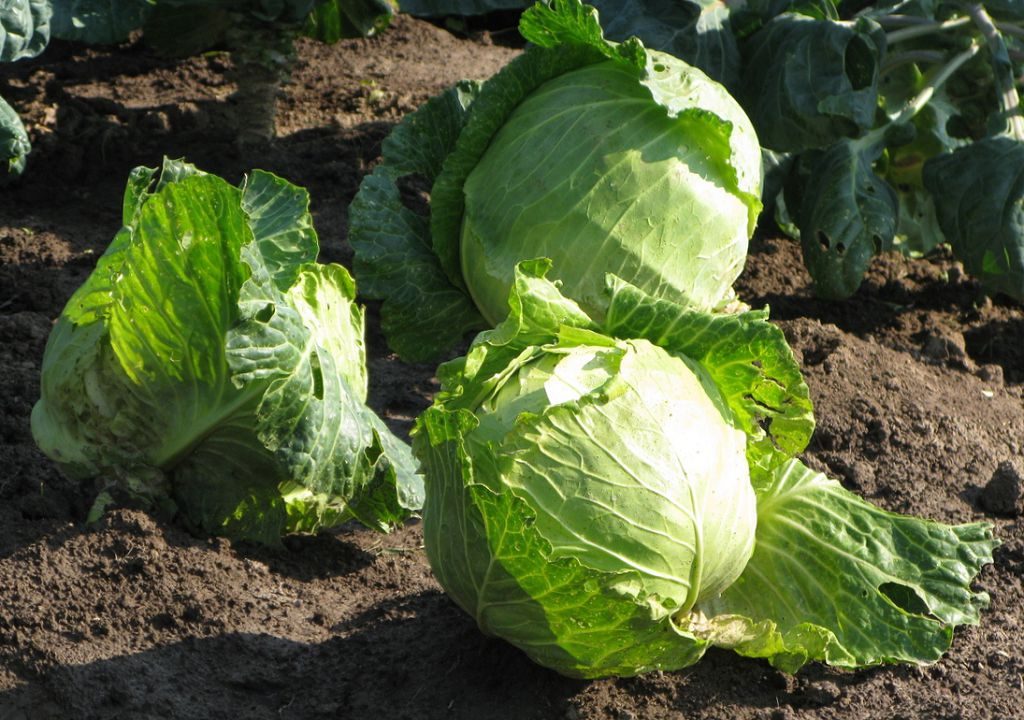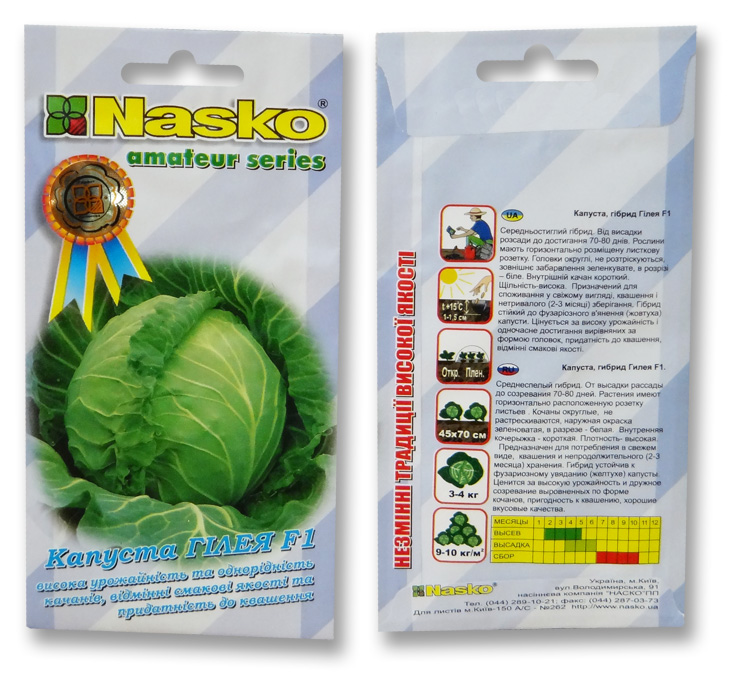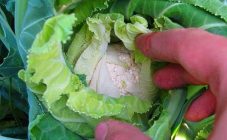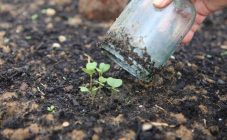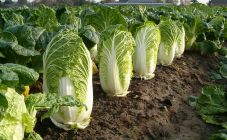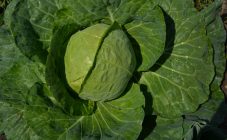Content:
Cabbage is a valuable food product; it is the most widespread vegetable crop in the world. Cabbage belongs to the cruciferous family and is a cold-resistant plant, since seedlings can withstand up to - 4 ° C.
Types and varieties of cabbage
There are many types of cabbage cultivated in different parts of the world:
- White-headed;
- Redhead;
- Savoy;
- Brussels;
- Beijing;
- Chinese;
- Colored;
- Broccoli;
- Kohlrabi.
The most famous and widespread species in Russia is white cabbage. In turn, the varieties of this variety can be:
- early;
- mid-season;
- late.
Early maturing cabbage varieties are usually not suitable for storage and are used fresh for a short time. The most popular are: June, Kazachok, Ditmarskaya early, Zarya. The Golden Hectare, Parel, lasts a little longer.
Longer storage mid-season varieties: Slava, Gift, Kashirka 202 (suitable for salting), Likurishka 498/15 (heat-resistant variety), Winter mushroom (suitable for winter storage), Ladozhskaya 22, Urozhainaya. Many of them can be used for pickling.
Late varieties are well kept: Amager, Zimovka 1474, Gribovsky hybrid 1, Kolobok.
Late varieties have excellent salting qualities. For growing Brussels sprouts, the following varieties are suitable: Isobella, Rosella, Franklin, Fregata.
The varieties of Peking cabbage have proven themselves well: Lyubasha, Pomegranate, Victoria, Cha-cha, Peking Express, Glass, Nika.
For growing cauliflower on the site, the following varieties are suitable: Summer Resident, Snow Globe, Express, White Beauty, Goat Dereza.
Seedless planting method
In the southern regions of Russia, cabbage can be planted immediately in open ground, before that, having chosen the type of interest and the appropriate variety.
After purchase, the seeds are prepared. Seeds that drown in salt water are viable, but those that float on the surface will not germinate. For further seed preparation, gardeners use manganese, fertilizers or honey dissolved in water. It is better to soak the seeds using the temperature difference: first in warm, then in cold water.
Before planting, prepare the beds. It is better to do this in the fall. Cabbage can be sown after legumes, carrots, beets and cucumbers. These are the best predecessors that do not degrade the soil.
Cabbage is demanding on the fertility of the soil, so many summer residents also fertilize it. But without a chemical analysis of the soil, you should not abuse fertilizers. An overabundance of them in the soil is also unfavorable for plants, as well as a deficiency. It is enough to dig up the garden bed on a shovel bayonet in the fall and add humus, ready-made compost, ash, and then feed it with a diluted mullein or vegetable concentrate.
To prepare the vegetable concentrate, the container is filled with crushed leaves and, filling them with water, leave to infuse, covered with a lid. The solution is ready after the appearance of foam on the surface.This top dressing is used in a diluted form.
Seeds are sown at a distance of 15-20 cm. You can sow a little closer to remove excess weak plants in the future. Culling is done after 3 leaves appear.
Early cabbage varieties are planted from late April to mid-May, medium ones - from late May to early June. Sowing of late varieties is carried out in May.
Even in the southern regions, cabbage is most often planted with seedlings.
White cabbage: planting seedlings at home
You can purchase or grow cabbage seedlings yourself.
It should be noted right away that seedlings grown in individual containers will be more developed and powerful.
Seeds are culled and prepared in the same way as for planting in open ground. Next, several seeds are sown in 1 pot in order to remove the excess weak later. If the seed was sown in boxes, then when the first 2 true leaves appear, the seedlings dive.
For the normal development of seedlings, good lighting is needed, as well as top dressing. There are special fertilizers for seedlings. You can use ready-made store or make it yourself, for example, a mullein solution or a diluted concentrate from green plants.
Seedlings can be grown in greenhouses, greenhouses or on a windowsill in an apartment. By the time the plant is transferred to the ground, it should be 35-50 days old, the bushes should have 4-7 true leaves and look healthy. Each region has its own sowing time, which can be calculated by any gardener. For example, sprouts appear 10-15 days after planting. Seedlings are transferred to warm ground (approximately 8 ° C). Thus, the seedlings should be planted 60-65 days before planting in open ground. But before that, it requires hardening for several weeks.
Other types of cabbage are grown for seedlings in a similar way.
How to properly plant cabbage seedlings in the ground
For planting seedlings, the beds are prepared in the same way as for planting with seeds. The place for cabbage is chosen in the fall: they dig up the garden bed, add compost, humus or ash. Despite the fact that this crop loves moisture, the place for cabbage should not be flooded. Before planting the seedlings, the bed is well loosened and leveled.
Before sending to the ground, the seedlings are watered abundantly, carefully removed from the container with a small amount of soil. The hole should be larger than the root system of the plant. Deepen to the first true leaves.
At what distance should I plant seedlings? Cabbage is planted at a distance of 45-60 cm. Plants planted too close will not be able to fully develop and will not be able to give a good harvest.
Further care
As mentioned earlier, cabbage loves water. Nevertheless, excessive waterlogging for these plants is just as harmful as drying out. Plants especially need watering during the formation of a head of cabbage. The first month after planting, the seedlings are watered 2 times a week with about 2-3 liters of water for each plant. Then watering is done 1 per week for 10-15 liters.
Also, 3 weeks after planting seedlings in open ground, experienced gardeners advise to huddle the plants, and after another 1 week, repeat the procedure.
The first feeding is done after 2 weeks. To do this, use either specialized fertilizers for seedlings, or a mullein solution (1: 5): about 5 liters for each plant. The second feeding can be done after 10 days.
Diseases and pests
Cabbage has a lot of enemies:
- cabbage leaf beetle (babanukha);
- cabbage fly;
- wavy flea;
- cabbage whites;
- cabbage moth;
- scoop;
- aphid;
- secretive proboscis;
- bear;
- slugs.
Like any cultivated crop, cabbage also suffers from several diseases:
- cabbage keel;
- peronosporosis;
- fusarium;
- mosaic.
These are the most common cabbage diseases.
Prevention of diseases and pests is the correct choice of a place for planting seedlings. It is imperative to avoid cruciferous ancestors and not plant cabbage in one place for several years in a row. This contributes to the preservation of diseases and pests in the soil.
To prevent the appearance of pests, plants and the ground around them can be slightly sprinkled with ash. You can also plant sage, hyssop, snakehead or peppermint in close proximity to cabbage. Weeds need to be removed in time. At the first signs of cabbage diseases and the appearance of pests, processing must be performed.
Harvest
The ripeness of cabbage heads is determined by touch. The heads of cabbage should look firm and firm. They are cut with a knife, leaving the lower leaves and a small part of the stump.
The ripeness of broccoli heads can be determined by the size, color and density of the head. You need to cut off the heads directly with a stem of about 7-10 cm in the early morning. Harvesting must be completed before frost.
A ripe cauliflower inflorescence should be 10-12 cm thick and firm enough. Cut with a very sharp knife along with the lower leaves. If the plant is underdeveloped, it is harvested along with the root system and allowed to mature by planting in a greenhouse or cellar.
Cabbage is considered an easy crop to grow. If you follow all the recommendations for planting and care, it is possible to get large yields and enjoy a healthy and tasty vegetable all autumn and winter.
